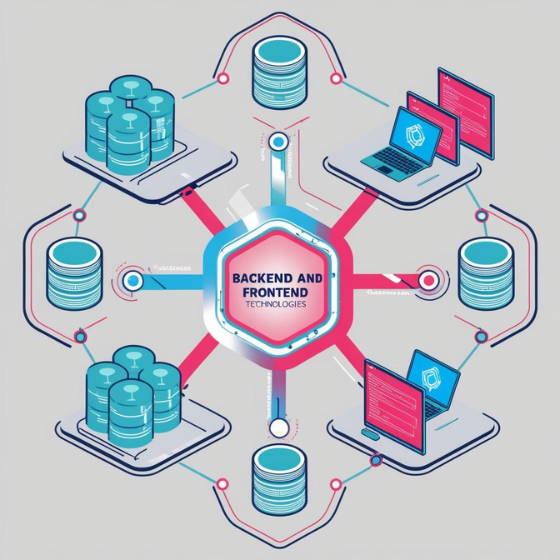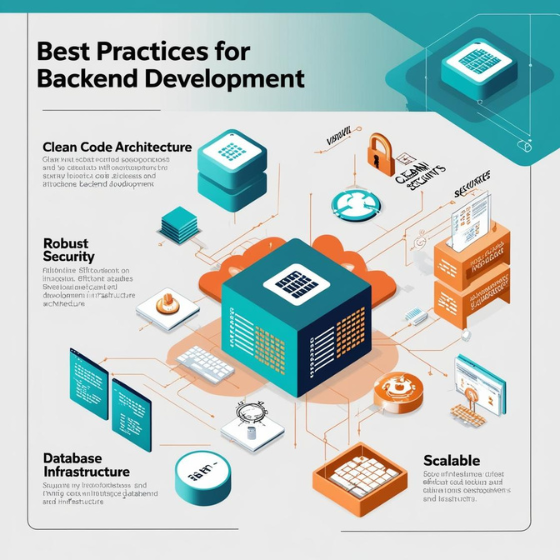In the landscape of backend development, Node.js has carved out a significant niche due to its efficiency and scalability. As an open-source, cross-platform JavaScript runtime environment, Node.js allows developers to build server-side applications with the same language used for client-side scripting. This blog provides a comprehensive understanding of Node.js, exploring its core features, benefits, use cases, and best practices for backend development.
What is Node.js?
Overview of Node.js
Node.js is built on Chrome’s V8 JavaScript engine and designed to execute JavaScript code server-side. It uses an event-driven, non-blocking I/O model that makes it lightweight and efficient, ideal for building scalable network applications. Unlike traditional server-side languages like PHP or Ruby, Node.js operates on a single-threaded event loop, which can handle multiple connections concurrently.
How Node.js Works
At its core, Node.js employs a non-blocking I/O architecture, which means operations like reading from a file or querying a database are handled asynchronously. Instead of waiting for these operations to complete before moving on to the next task, Node.js processes them in the background. This approach maximizes performance and scalability, enabling Node.js to handle a large number of simultaneous connections efficiently.
Key Features of Node.js
Event-Driven Architecture
Node.js operates on an event-driven architecture, which allows it to handle numerous concurrent connections with a single server. This architecture uses an event loop that listens for and responds to events. For instance, when a user sends a request, Node.js triggers an event handler that processes the request asynchronously, freeing up resources for other tasks.
Non-Blocking I/O
The non-blocking I/O model is one of Node.js’s standout features. It ensures that operations such as file reads, network requests, and database queries do not halt the execution of other code. By utilizing callbacks, promises, or async/await, Node.js can perform tasks concurrently, reducing wait times and improving overall efficiency.
NPM Ecosystem
Node.js benefits from a robust package management system known as NPM (Node Package Manager). NPM hosts a vast repository of open-source libraries and modules that can be easily integrated into projects. This ecosystem significantly accelerates development by providing pre-built solutions for common tasks, such as authentication, database interactions, and API integrations.
Benefits of Using Node.js for Backend Development
High Performance
Node.js’s asynchronous and non-blocking architecture leads to high performance, especially for I/O-bound tasks. It is well-suited for applications that require real-time capabilities, such as chat applications or live streaming services, where quick data exchange is crucial. The event-driven model ensures that server resources are used efficiently, enabling applications to scale effectively.
Scalability
Scalability is a major advantage of Node.js. Its event-driven architecture allows for horizontal scaling, where additional servers can be added to handle increased load. Additionally, Node.js supports clustering, which lets developers create multiple instances of the application to utilize multi-core processors effectively. This scalability ensures that applications can handle growth and increased traffic seamlessly.
Unified JavaScript Language
Using JavaScript for both client-side and server-side development offers several benefits. Developers can work within a single language ecosystem, reducing the learning curve and promoting consistency across the application. This unified approach also streamlines development processes, as code and skills can be reused across the stack.
Use Cases for Node.js
Real-Time Applications
Node.js excels in building real-time applications that require constant data exchange between the server and client. Examples include chat applications, online gaming, and collaborative tools. Its ability to handle many concurrent connections and deliver real-time updates makes it an ideal choice for these use cases.
APIs and Microservices
Node.js is widely used for developing RESTful APIs and microservices due to its lightweight and efficient nature. Its non-blocking I/O model and modular architecture allow for the creation of scalable and maintainable APIs that can handle numerous requests concurrently. This flexibility is advantageous in building modern, service-oriented architectures.
Single Page Applications (SPAs)
For Single Page Applications that require dynamic content updates without full page reloads, Node.js provides a solid foundation. Its ability to handle asynchronous operations and real-time data makes it suitable for SPAs, where smooth user experiences and quick data interactions are critical.
Best Practices for Node.js Backend Development
Modular Code Structure
Organizing code into modular components enhances maintainability and scalability. By separating concerns into different modules, such as controllers, services, and models, developers can manage code more effectively. This modular approach also facilitates easier testing and debugging.
Error Handling and Logging
Robust error handling and logging are essential for maintaining application stability. Implementing proper error handling mechanisms, such as try-catch blocks and centralized error handlers, ensures that issues are managed gracefully. Additionally, integrating logging tools helps in monitoring application performance and diagnosing problems.
Security Practices
Security is a critical aspect of backend development. Best practices for securing Node.js applications include input validation, data sanitization, and secure authentication mechanisms. Using libraries and frameworks that follow security best practices, such as helmet.js for HTTP headers and bcrypt for password hashing, enhances application security.
Performance Optimization
To ensure optimal performance, developers should consider various optimization techniques, such as minimizing blocking operations, utilizing caching strategies, and optimizing database queries. Profiling and monitoring tools can help identify performance bottlenecks and areas for improvement.
Future Trends and Developments in Node.js
Growing Ecosystem
The Node.js ecosystem continues to grow, with new libraries, frameworks, and tools emerging regularly. The expanding ecosystem offers developers more options and solutions, further enhancing Node.js’s capabilities and versatility in backend development.
Integration with Emerging Technologies
Node.js’s flexibility allows for integration with emerging technologies, such as serverless computing and microservices architectures. As these technologies gain traction, Node.js is likely to evolve and adapt, offering new ways to build scalable and efficient applications.
Conclusion
Node.js has established itself as a powerful and efficient platform for backend development. Its event-driven architecture, non-blocking I/O model, and unified JavaScript language contribute to its high performance and scalability. By understanding Node.js’s key features, benefits, and best practices, developers can leverage its capabilities to build robust and efficient backend applications. As the technology landscape continues to evolve, Node.js remains a vital tool for modern software development, offering innovative solutions for a wide range of applications.







